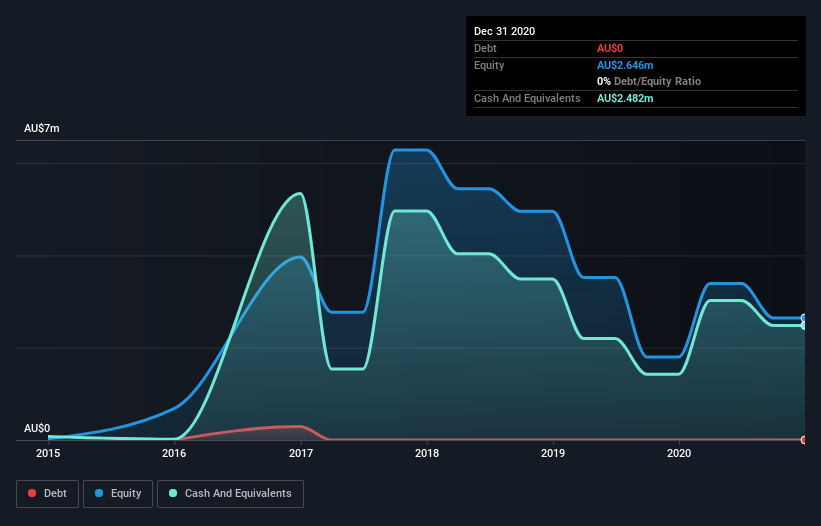We're Interested To See How Dropsuite (ASX:DSE) Uses Its Cash Hoard To Grow
There's no doubt that money can be made by owning shares of unprofitable businesses. By way of example, Dropsuite (ASX:DSE) has seen its share price rise 204% over the last year, delighting many shareholders. Having said that, unprofitable companies are risky because they could potentially burn through all their cash and become distressed.
In light of its strong share price run, we think now is a good time to investigate how risky Dropsuite's cash burn is. In this report, we will consider the company's annual negative free cash flow, henceforth referring to it as the 'cash burn'. First, we'll determine its cash runway by comparing its cash burn with its cash reserves.
View our latest analysis for Dropsuite
Does Dropsuite Have A Long Cash Runway?
You can calculate a company's cash runway by dividing the amount of cash it has by the rate at which it is spending that cash. In December 2020, Dropsuite had AU$2.5m in cash, and was debt-free. Looking at the last year, the company burnt through AU$1.8m. So it had a cash runway of approximately 16 months from December 2020. Notably, however, the one analyst we see covering the stock thinks that Dropsuite will break even (at a free cash flow level) before then. In that case, it may never reach the end of its cash runway. The image below shows how its cash balance has been changing over the last few years.
How Well Is Dropsuite Growing?
On balance, we think it's mildly positive that Dropsuite trimmed its cash burn by 11% over the last twelve months. Having said that, the revenue growth of 50% was considerably more inspiring. We think it is growing rather well, upon reflection. While the past is always worth studying, it is the future that matters most of all. So you might want to take a peek at how much the company is expected to grow in the next few years.
Can Dropsuite Raise More Cash Easily?
Even though it seems like Dropsuite is developing its business nicely, we still like to consider how easily it could raise more money to accelerate growth. Issuing new shares, or taking on debt, are the most common ways for a listed company to raise more money for its business. One of the main advantages held by publicly listed companies is that they can sell shares to investors to raise cash and fund growth. By comparing a company's annual cash burn to its total market capitalisation, we can estimate roughly how many shares it would have to issue in order to run the company for another year (at the same burn rate).
Since it has a market capitalisation of AU$122m, Dropsuite's AU$1.8m in cash burn equates to about 1.5% of its market value. That means it could easily issue a few shares to fund more growth, and might well be in a position to borrow cheaply.
Is Dropsuite's Cash Burn A Worry?
As you can probably tell by now, we're not too worried about Dropsuite's cash burn. In particular, we think its revenue growth stands out as evidence that the company is well on top of its spending. Its weak point is its cash burn reduction, but even that wasn't too bad! It's clearly very positive to see that at least one analyst is forecasting the company will break even fairly soon. Looking at all the measures in this article, together, we're not worried about its rate of cash burn, which seems to be under control. Readers need to have a sound understanding of business risks before investing in a stock, and we've spotted 2 warning signs for Dropsuite that potential shareholders should take into account before putting money into a stock.
If you would prefer to check out another company with better fundamentals, then do not miss this free list of interesting companies, that have HIGH return on equity and low debt or this list of stocks which are all forecast to grow.
This article by Simply Wall St is general in nature. It does not constitute a recommendation to buy or sell any stock, and does not take account of your objectives, or your financial situation. We aim to bring you long-term focused analysis driven by fundamental data. Note that our analysis may not factor in the latest price-sensitive company announcements or qualitative material. Simply Wall St has no position in any stocks mentioned.
Have feedback on this article? Concerned about the content? Get in touch with us directly. Alternatively, email editorial-team (at) simplywallst.com.

